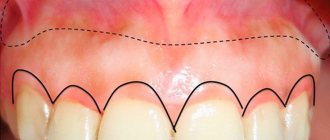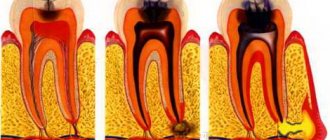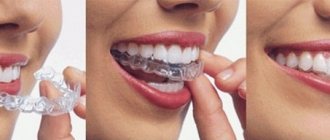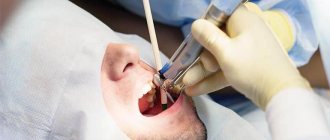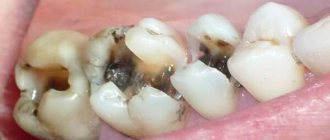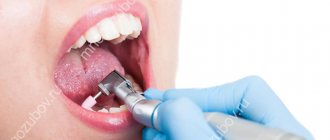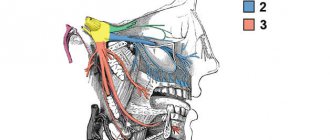From this article you will learn:
- Indications
- Contraindications
- How is gingivoplasty performed?
- Rehabilitation after gum surgery
- Complications after gum surgery
- How much does gum surgery cost?
Gingivoplasty is a surgical method for correcting, restoring or changing the gingival contour. The operation is performed on the mucous membrane, but may also include elements of bone grafting of the gums, if necessary.
Plastic surgery of soft gum tissue helps to get rid of a number of medical and aesthetic problems. Gingivoplasty is performed on the gums of both jaws, both over the entire length of the dentition and in the area of an individual tooth, depending on the indications and wishes of the patient. Therefore, the price of gum surgery can be radically different - this determines the volume and complexity of the intervention performed.
What is gum grafting?
Gum grafting is performed in a dental office under local anesthesia. It uses both traditional scalpels and laser technologies. The doctor decides what is suitable in your particular case. Often, in order to get a general idea of the result of the procedure, before it begins, the dentist draws the contours of the future position of the gums on the teeth.
The operation is performed by a periodontist. Before deciding on a procedure, carefully select an aesthetic dentistry clinic and find out the competence of your doctor: ask him about his experience and qualifications. Always look into your dentist's continuing education and ask to see examples of work they have already done.
Make an appointment
The Dentpremium Center is included in the rating of the best clinics in Moscow, providing not only dental services, but also assistance to patients in need of treatment by specialists in maxillofacial surgery.
On the official website of the clinic you can get information about the services provided, the methods used and the cost of services. You can also always read reviews about dental surgeons working in our center.
You can make an appointment by phone or on the clinic’s website at any time convenient for you. If a diagnosis indicating the need to consult a dental surgeon has not been established, we recommend that you first make an appointment with a dental therapist.
The Dentpremium center often holds promotions and discounts. In the special section “Promotions” you can always get information about current offers, which will be a pleasant bonus for you to provide high-quality services for the treatment of dental pathologies by dentists and maxillofacial surgeons.
Plastic surgery for gum recession
There are some periodontal diseases that cause gum recession. This is a condition in which the gum tissue shrinks and exposes the root of the tooth, which not only looks unsightly, but can also lead to many problems and even tooth loss. Recession can occur on one tooth or on several.
A too short and powerful frenulum or insufficient vestibule of the oral cavity, as well as some periodontal diseases, contribute to the detachment of the free edge of the gums, the formation of gum pockets, and inflammation. Vestibuloplasty can avoid this. This operation is performed in the vestibule of the oral cavity to deepen it and more rationally distribute soft tissue in this area.
In order to return the gum tissue to the required volume, cover exposed roots, prevent root caries and generally improve the aesthetics of a smile, gum augmentation is also performed. Depending on the situation, only connective tissue and epithelium can be built up, or maybe together with the periosteum. In the first case, such a flap is called split, in the second - complete.
Modern methods
The Dentpremium Center for Expert Dentistry and Medicine provides the services of a maxillofacial dental surgeon of the highest category, who has extensive experience in performing operations using modern techniques. The use of innovative treatment methods can reduce the risks of complications, speed up the recovery process and achieve a positive result with minimal trauma.
Root apex resection
Performing surgery to save a tooth is a more complex operation than extraction. Modern dentistry prefers a method such as resection of the root apex. As a result of the doctor’s actions, it is possible to remove only part of the tooth root that is susceptible to the pathological process. Thus, the functionality and sensitivity of the organ is preserved.
Root resection
If it is possible to save the tooth if it has several roots. In this case, one of the root processes should not be affected. The affected root is completely resectioned. The remaining roots remain and fully perform supporting and other functions.
Ultrasonic cleaning
Modern methods allow, in case of inflammatory processes in the gums, to clean periodontal pockets without significant trauma. The Dentpremium clinic uses ultrasonic cleaning using open and closed curettage. The purpose of the operation is to restore contact between the enamel and soft tissues of the gums.
Gingivoplasty
Plastic surgery in dentistry also has its place. The Dentpremium center provides surgeon services for gum plastic surgery. Gingivoplasty involves operations to eliminate pathological changes in the soft tissues in the cervical area of the root. The result of the operation is the restoration of the gum structure and its appearance.
Gingivectomy
Gum treatment is also performed using gingivectomy. Surgical intervention is carried out to reduce the existing size of gum pockets and remove excess soft tissue in the periodontal area to relieve inflammation and prevent the spread of the pathological process.
Implantation with delayed loading
The implantation procedure relates primarily to orthodontics, but without a surgeon it is difficult to perform the procedure efficiently. The Dentpremium center uses a modern implantation method with delayed loading, suitable for restoring teeth even in severe cases. High-quality work of the surgeon and orthodontist allows us to achieve results in the form of survival in 98% of patients.
Sinus lift
Lack of bone tissue can be a serious reason why implants are not installed. To eliminate the defect, the dental surgeon performs bone grafting using the sinus lift method. The essence of the operation is to artificially increase (build up) the volume of existing bone tissue.
Gum extension techniques
There are two main methods of gingivoplasty:
- flap plastic surgery – tissue from the patient’s oral cavity is used. The doctor incises a section of the gum and, using a tissue flap from other areas of the mucous membrane (adjacent gum, palate, inner part of the cheek), forms a contour,
- extension with collagen matrices or barrier membranes - the material is tightly sewn to the area of the gum that needs to be restored, and then the body forms its own tissues based on the material.
Stages of the procedure
- Sanitation of the oral cavity. This stage is carried out before any dental surgery. The oral cavity must be healthy.
- Anesthesia. The operation is usually done under local anesthesia. In case of panic, the doctor may suggest sedation or general anesthesia.
- Antibacterial treatment. In order to prevent the risk of inflammation of the operated gum area, the oral cavity is treated with antibacterial agents.
- Formation of gingival flaps. To do this, the doctor makes an incision in the gum in two places and peels off the flaps.
- Curettage of dental pockets. This stage is necessary in order to remove plaque and stone from the base of the tooth.
- After the cleaning procedure, the doctor adjusts the shape and size of the internal flap and returns it to its place. Next he will cover the inner flap
external and will close them.
When indicated, osteoplasty is performed during surgery. Synthetic materials are used to build bone tissue. Osteoplastic material is placed under the internal gingival flap. For additional protection and better survival, the osteoplastic material is covered with a membrane. After this, the internal flap is returned to its place, covered with the external one and sutured.
On average, the operation takes about an hour. Since gingivoplasty is a surgical intervention, over the next 2-3 days the swelling of the gums persists and the sensitivity of the teeth increases. To prevent inflammation after the procedure, the doctor will prescribe anti-inflammatory drugs. When the operated gum is very painful, you can take painkillers.
Gum plastic surgery during implantation
Gumplasty is performed when the root is exposed, after tooth implantation. Often the need for this operation arises when an implant is installed in place of a long-missing tooth. In this case, the correct gum line is not only aesthetic. It protects the implant from infection and the development of peri-implantitis, which without proper treatment can lead to the loss of the entire structure. In addition, it allows you to prevent further exposure of the roots, reduce tooth hypersensitivity, reduce the likelihood of root destruction and, of course, improve the aesthetics of your smile.
Postoperative period
After gingivoplasty, some side effects are possible - swelling, redness, increased tooth sensitivity. For quick rehabilitation and the absence of complications, you must follow the surgeon’s recommendations and regularly come to the clinic for examination.
For several days after the operation, it is advisable to follow the following recommendations:
- Rinse your mouth regularly and brush your teeth very carefully;
- Give up bad habits: smoking can lead to inflammation of injured tissues;
- Follow the diet: eat soft foods, avoid very hot or cold foods;
- Do not expose yourself to physical stress.
Thus, having more carefully understood what gingivoplasty is, it becomes clear that this is a simple, but at the same time very effective operation.
Gum grafting against “gummy” and “shark” smiles
The gingival contour depends on many factors. Genetics, certain medications, and certain diseases lead to soft tissue hypertrophy. There are too many of them, which is why the teeth appear small, the so-called “shark smile” appears. In this case, gingivectomy is used. It consists of excision of excess tissue, elimination of gum pockets or hood, which occurs, for example, during the eruption of “wisdom teeth”. After excision of excess, the desired soft tissue contour is formed.
Many patients also resort to gum grafting, especially on the front teeth, if they have a gummy smile. It is characterized by the exposure of more than two millimeters of the upper gum when a person smiles, which gives the face a “horse” appearance. In this case, with the help of gum plastic surgery, excess soft tissue is removed from the surface of the teeth, and the gum contour is given a beautiful shape.
When to contact a dental surgeon
The Dentistry and Maxillofacial Surgery Clinic Dentpremium provides comprehensive treatment, which begins with an appointment with a general practitioner. If the doctor determines the presence of diseases that require the skills of a specialist, the therapist sends the patient for a consultation with a dental surgeon.
A visit to a dental surgeon’s office is necessary for the following indications:
- chronic periodontitis during the period of exacerbation, in the absence of treatment effectiveness;
- destruction of the tooth crown and no possibility of restoration;
- pathological growth of teeth;
- wisdom tooth removal;
- dystopic or impacted teeth;
- jaw injury;
- deviations in the ability to move the jaws;
- severe tooth mobility.
There are other indications. The list of diseases, pathological processes and anomalies that dental surgery deals with is extensive. Each case is considered individually.
Gum grafting: healing after surgery
Depending on the type of gum grafting, complete recovery takes from several days to several weeks. Your doctor will give you a list of recommendations to follow after surgery. He will also prescribe painkillers. In general, the recommendations boil down to the following: it is necessary to remain calm and reduce physical activity, eat soft foods at room temperature and avoid spicy foods until the gums are completely restored, and carefully carry out oral hygiene, including rinsing. Until complete healing, you will have to wear a special mouthguard that protects the affected areas from external factors and promotes faster and safer healing.
Swelling after surgery lasts for several days. As a rule, on the third day the swelling may increase, and then subside. If swelling does not go away, severe pain, bleeding or other frightening symptoms appear, you should immediately consult a doctor.
Gum grafting is a surgical procedure, and like any other, it has certain risks. The most common are allergies to the anesthetic and recurrent gum recession. In order to avoid allergies, you should notify your doctor in detail in advance about the presence of any diseases and the occurrence of allergies to medications in the past. In case of relapse, the procedure can be repeated no earlier than six months after the previous one.
Contraindications
Plastic surgery has a number of absolute contraindications.
Thus, surgery is not performed if the patient:
- problems with blood clotting;
- diagnosed with cancer;
- history of uncompensated diabetes mellitus;
- I am allergic to anesthesia.
But even if the above factors are excluded, before gum correction, the patient must undergo laboratory tests and undergo instrumental diagnostics.
Based on their results, qualified specialists at the VivaDent clinic will decide on the possibility or impossibility of performing the operation and select the optimal method with minimal risks.
Complications
Complications after gingivoplasty are rare. The postoperative period is short. When an experienced doctor operates and the patient follows all the recommendations, the discomfort goes away after 2-3 days. The gums heal completely in two weeks.
After surgery there may be:
- Pain in the operated gum.
- Swelling of tissues.
- Sensitivity of teeth in the surgical area.
Sometimes gingivoplasty results in slight loosening of the teeth. This is also within normal limits. In order to avoid even greater loosening and the risk of losing teeth, they are splinted. To do this, a special splint is installed on the area of the dentition. After complete healing, the splint will be removed.
Why did the implant become exposed?
advanced form of implant exposure
There are many reasons for the surface of implants to be exposed; we would like to point out the most common:
- lack of proper care after implantation;
- smoking, bad habits;
- incomplete penetration of the implant into the bone tissue during installation;
- excessive force during installation, overheating of the bone, which causes necrosis of the bone tissue around the implant;
- incorrect positioning of the implant in the bone;
- unsuccessful bone grafting (bone augmentation);
- During installation, the minimum permissible distances between implants or between the implant and tooth are not observed. For example, placing implants very close to each other causes bone necrosis;
- overload of the implant during operation - improper prosthetics;
- a low-quality abutment or crown is installed on the implant.

